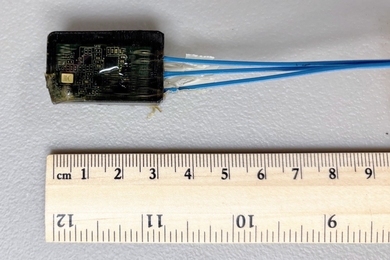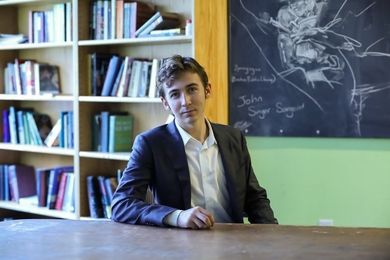Publishing academic papers is a top priority for MIT researchers, but they should also be aware of the need to protect their inventions with patents. That's where MIT's Technology Licensing Office can help.
The movement of knowledge and discoveries from MIT to the general public has had a major impact on economic development and job creation, both nationally and locally. Patent protection is critical to these activities.
At any given time, more than 1,000 MIT researchers -- faculty, postdocs, research staff and students -- are inventors on patents being filed or prosecuted through the TLO. More than half of these patents will eventually be licensed to companies for development and commercialization with the hope of impacting the "real world." The TLO grants more than 100 licenses a year, many involving a suite of patents; between 20 and 30 of these go to start-up companies.
Why patents matter
Companies' investments in "university stage" inventions are typically very risky, because neither the technical practicality nor the market potential of the technology is established. Often very substantial financial investment is needed to bring them to market -- with substantial risk that the investment will not pay off. Strong patent protection is a company's best protection from later competitors if the product is successfully brought to market.
In a global economy, worldwide patent protection is most valuable. But, except in the United States (and a few much smaller countries), any public disclosure before a priority patent is filed will bar filing for patent protection. Public disclosure can include written publications, Internet descriptions, poster sessions and even public talks.
Fortunately, only one priority patent need be filed in the United States before the public disclosure. This then preserves the possibility of later filing for international patents.
How to protect your invention
The TLO encourages researchers with a potential invention to submit a Technology Disclosure form -- available for download -- at the time a first rough draft is made of a potential publication, poster session, or planned talk to anything other than an all-MIT audience. The form will ask for the anticipated date of first public disclosure.
Upon receipt of the Technology Disclosure, the TLO will evaluate whether the invention appears to have commercial potential. If time allows prior to public disclosure, the TLO will also ask a member of the inventing team -- usually a postdoc or graduate student -- to meet with the TLO's search librarian to search for "prior art" (references, including patents, that may show prior invention by others). A patent application will be filed if no damning prior art is found and if the invention is assessed as having potential commercial applicability.
"We hope to get Technology Disclosures at least a couple of months prior to the publication, but we will never ask the researchers to delay their publication; we understand the academic priorities," said TLO Director Lita Nelsen. "If necessary, we can file a 'rush' patent application -- but more time allows better quality."
What to do if you have already published
All is not lost if you have published before filing a patent application. Unlike in most foreign countries, U.S. patent law allows filing within one year after publication. Clearly, it's better to have worldwide patent protection, but a U.S. patent will cover any products made in the United States, wherever sold; or imported to the United States, wherever made.
It is also possible that your publication was not "enabling" -- that is, did not provide sufficient detail to enable others to replicate your invention. In this circumstance, worldwide patent protection may still be available.
For further information, see the TLO web site or contact the TLO at: tlo@mit.edu.
A version of this article appeared in MIT Tech Talk on October 29, 2008 (download PDF).






